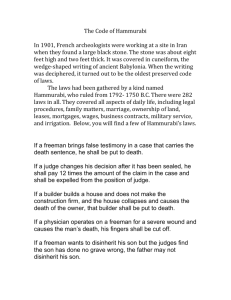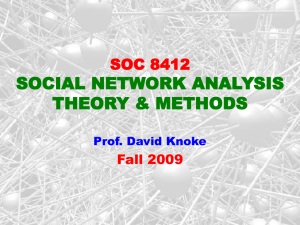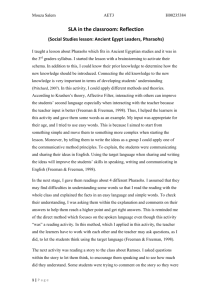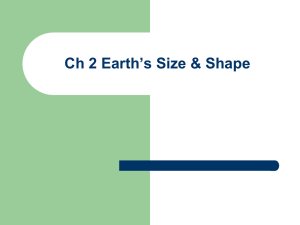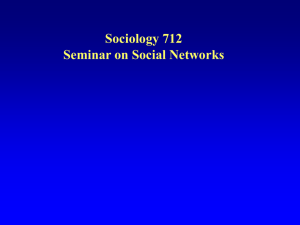Lect1
advertisement
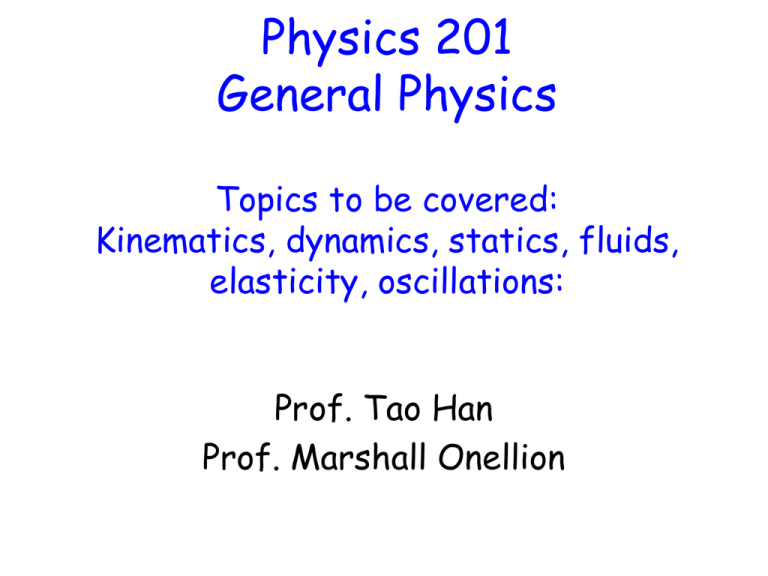
Physics 201 General Physics Topics to be covered: Kinematics, dynamics, statics, fluids, elasticity, oscillations: Prof. Tao Han Prof. Marshall Onellion Course information • Course homepage • Let’s have a quick look: • http://www.physics.wisc.edu/undergrads/courses/ spring10/201/ – Find there detailed information on syllabus, homework, exams, grading, discussion, labs • Syllabus: – – – - Lectures: Typically 1 Chapter per week from textbook Two discussion sessions, One lab each week One homework (Always due on Tuesdays at midnight) Three midterm exams + the Final Textbook, e-book and WebAssign • The textbook is available in electronic form as an e-book. – Paul Tipler and Gene Mosca, Physics for Scientists and Engineers, 6th ed. – You can read it from any computer with access to internet. http://webassign.net/login.html. – This is by far the cheapest solution. If you like to buy it in real paper, it is also available as softcover in 2 volumes (this course covers the 1st volume) • WebAssign: – This is our homework assignment system. Problems are taken from the textbook but numbers are randomized. – Let’s have a quick look into WebAssign: – Intro to WebAssign – Student Guide to WebAssign ©2008 by W.H. Freeman and Company Your Discussions: twice a week. Labs: Once a week. with Your TA’s: Our team of Teaching Assistants will be your instructors in discussions and labs: Sections Your TA -------------------------------• 301 305 Yip, Stephen • 302 312 Cho, Junghun • 303 306 Dong, Zhe • 304 310 Liu, Zhen • 307 309 Schroeder, Daniel There will be 12 hrs/week See course web for time and room. Physics is basic Science, that includes “everything” Mechanics: (this term’s topics) Motion, forces, balance, energy, fluids, oscillations… Optics: Light, mirrors/lenses, cameras, Micro/Telescopes, Lasers. Electricity & Magnetism: Charges, currents, fields, thunders, radio/TV’s, heat … Atomic, nuclear, elementary particles: Microscopic world, basic building blocks/forces, HEP … ©2008 by W.H. Freeman and Company Nature of Science Theory Observation Theories are made to explain observations. Theories will make predictions (they are testable). Observations and experiments are used to test if the prediction is accurate. The cycle continues for science advancement. In history, physics and astronomy have set the ground rules of modern science. ©2008 by W.H. Freeman and Company Example: Determination of the Earth diameter by Eratosthenes (276 BC– 195 BC) • Eratosthenes wanted to determine the diameter of the Earth. (Yes, at the time, the Earth was already believed to be round, – that was not the question.) • He observed the angles of the sun at the same time in Alexandria and some 800km South of Alexandria (Syene= Aswan) • From the difference, he got: R = D/sinθ ≈ 6458 km to within 2% precision. • An example of great science! Example: Determination of the Earth diameter by Eratosthenes (276 BC– 195 BC) • Eratosthenes wanted to determine the diameter of the Earth. (Yes, at the time, the Earth was already believed to be round, – that was not the question.) • He observed the angles of the sun at the same time in Alexandria and some 800km South of Alexandria (Syene= Aswan) • From the difference, he got: R = D/sinθ ≈ 6458 km to within 2% precision. • An example of great science! Units • Physical quantities have units! • Example: Unit of length – In the Middle ages many kingdoms had different definitions of a foot, etc. – Inch, foot, meter, mile, light-year … • Today in science/engineering, the SI system of units. Three basic units in mechanics: – Length: Meter (Based on the speed of light: length of path traveled by light in 1/299,792,458s) – Mass: kg (Platinum cylinder in International Bureau of Weights and Measures, Paris) – Time: s (Time required for 9,192,631,770 periods of radiation emitted by cesium atoms.) • There are 7 basic units (including other branches of physics). SI Units SI Base quantities Length meter m Time second s Mass kilogram kg Electric Current ampere A Temperature kelvin K Amount of substance mole mol Luminous intensity candela cd ©2008 by W.H. Freeman and Company Prefixes • Depending on the scale one often likes to use prefixes. • Example, for length it is convenient to use km = 1000 m when traveling by car, or nm=10-9 m when discussing molecular scale objects. Conversions • Conversions between units are very important. The use of different units has again and again led to errors, sometimes with bad consequences in engineering and science (and homework/exams), but it is easy to avoid. 1 mile = 1.609 km, 1 hr = 3600 s, 1 tonne = 1000 kg ... • Avoid skipping the units (for example, to save your writing time ?) – Are all the ingredients for a problem in the same units system? It is crucial to perform the conversion, BEFORE doing any algebra. – Basic SI units are always safe It is OK to use km or nm, but don’t mix them! • We will expect you to give results with appropriate units, in homework, exams, etc. as part of the correct answer! Derived quantities and dimensions m2 m3 m/s m/s2 N=kg•m/s2 N/m2=kg/m•s2 kg/m3 … Dimensional analysis can give you a check/answer Measurement and Significant figures • A measurement has a precision (or error): Your instruments (ruler, scale, timer…); Every time you perform a measurement, it isn’t always the same. (4.321 ± 0.001) m • A significant figure is one that is reliably known • All non-zero digits are significant (123.456) • Zeros are significant when – between other non-zero digits (100002) – after a non-zero digit AND BEFORE or AFTER the decimal point (100. and 1.00) – can be clarified by using scientific notation • Significant figures in a final result equals significant figures in the least accurate of the factors being combined Measurement and Significant figures • Calculators will not give you the right number of significant figures; they usually give too many but sometimes give too few (especially if there are trailing zeroes after a decimal point). • The top calculator shows the result of 2.0 / 3.0 (0.67) • The bottom calculator shows the result of 2.5 x 3.2 (8.0) • Use your physics sense. • We recommend you not to round-off too early. The universe by orders of magnitude ©2008 by W.H. Freeman and Company Order of magnitude: Rapid Estimating A quick way to estimate a calculated quantity is to round off all numbers to one significant figure and then calculate. Your result should at least be the right order of magnitude; this can be expressed by rounding it off to the nearest power of 10. Such back-on-the-envelope estimates are very helpful for double checking a result of a calculation. Diagrams are also very useful in making estimations. Tire treads a few mm - cm ©2008 by W.H. Freeman and Company Diameter of a galaxy: 1021 m ≈ 1 million light-year ©2008 by W.H. Freeman and Company Human: 1 m Mountain: 103 – 104 m ©2008 by W.H. Freeman and Company Molecules on material’s surface: Nano meters ©2008 by W.H. Freeman and Company How many grains of sand on a beach? Total volume/sand size= 10 cm3/10-6 cm3 ≈ 10 million ©2008 by W.H. Freeman and Company
